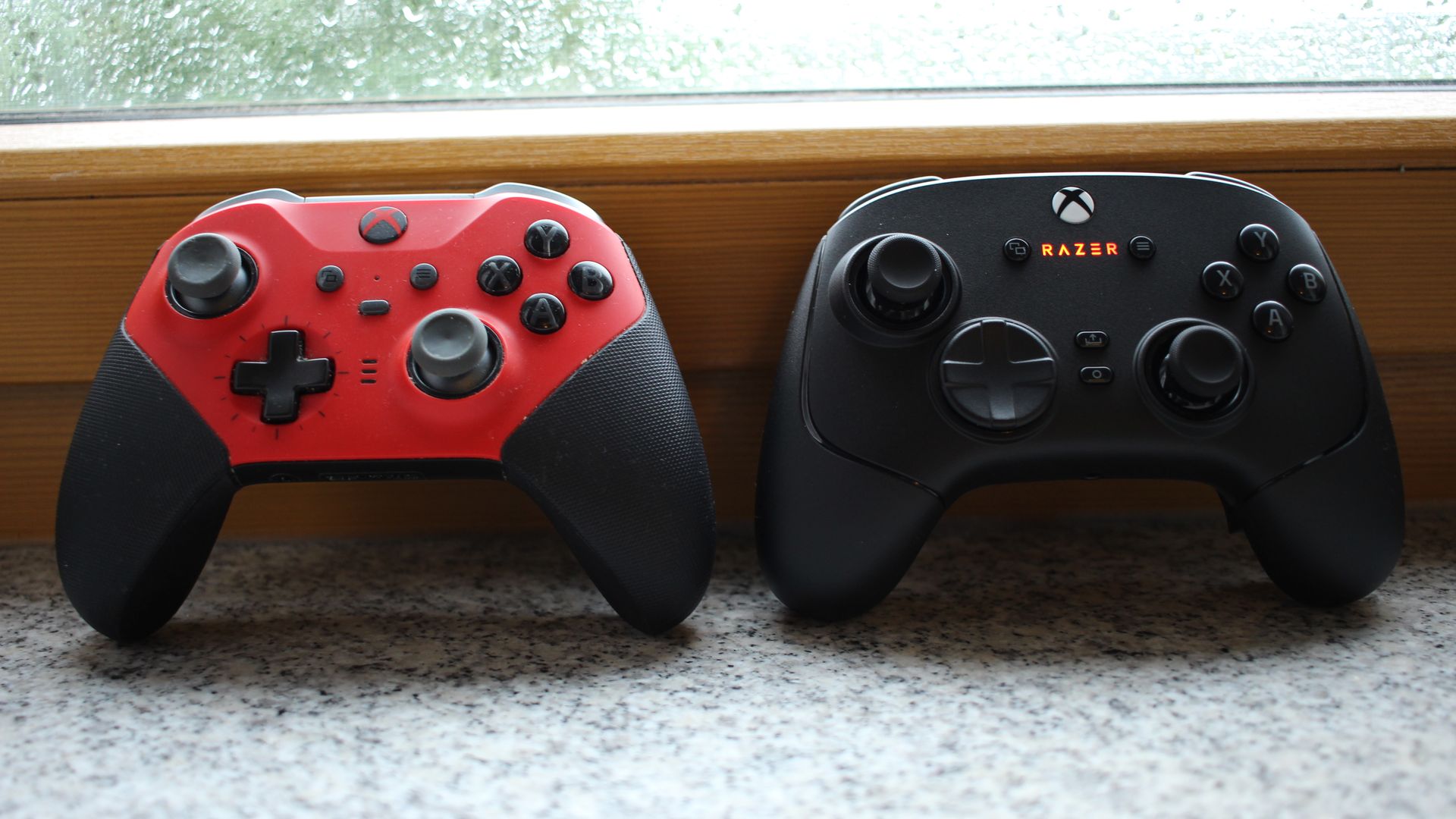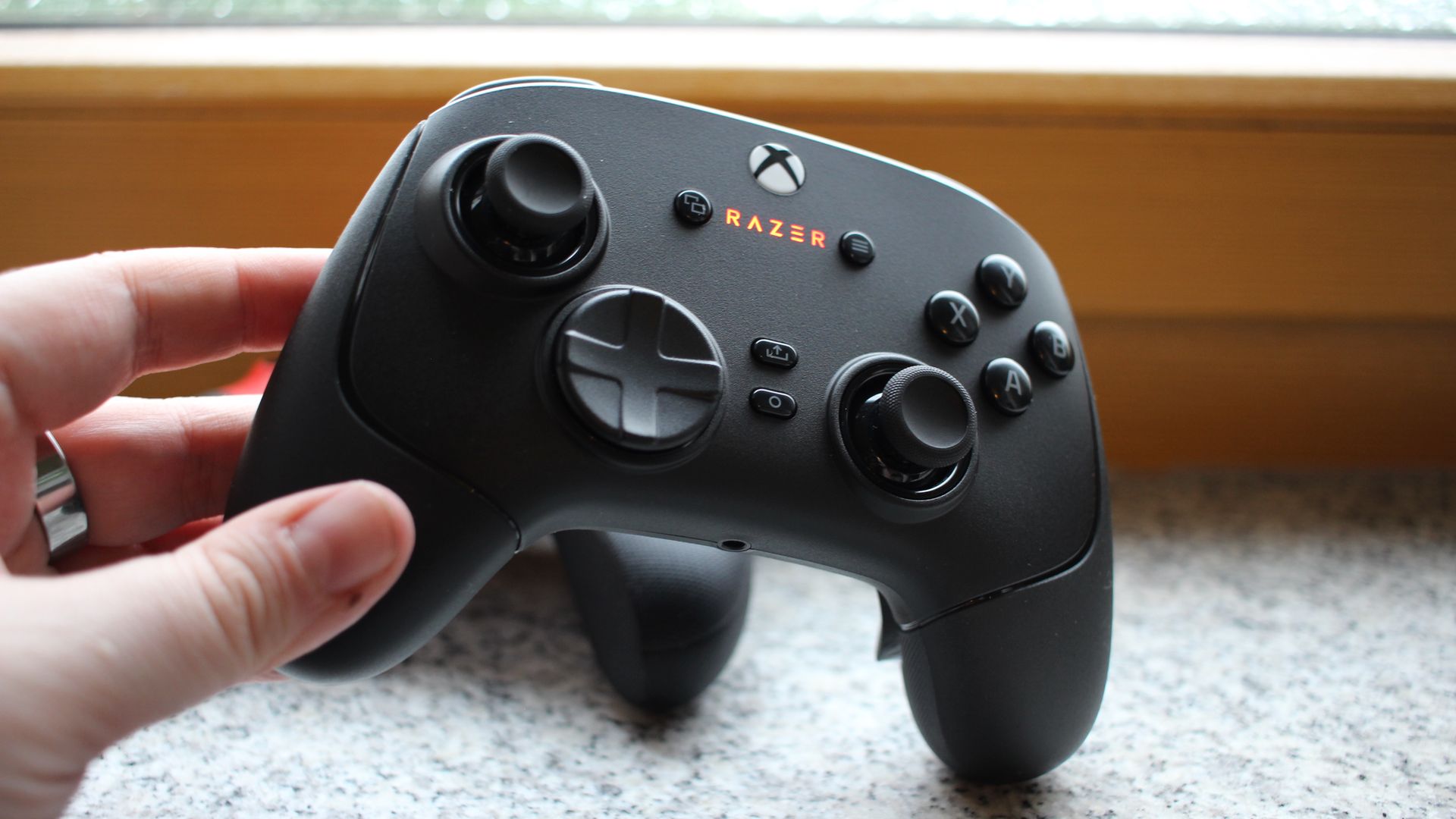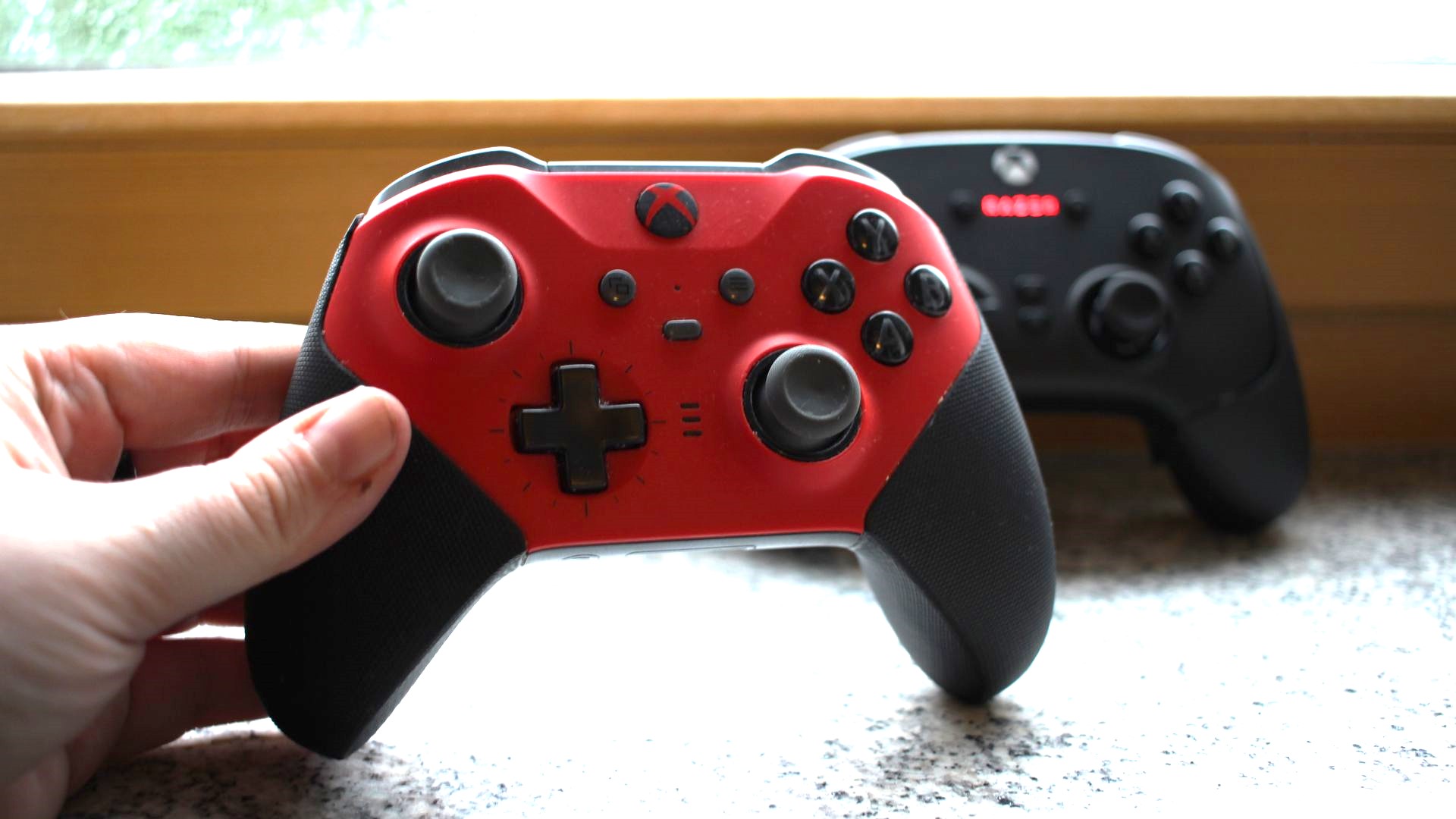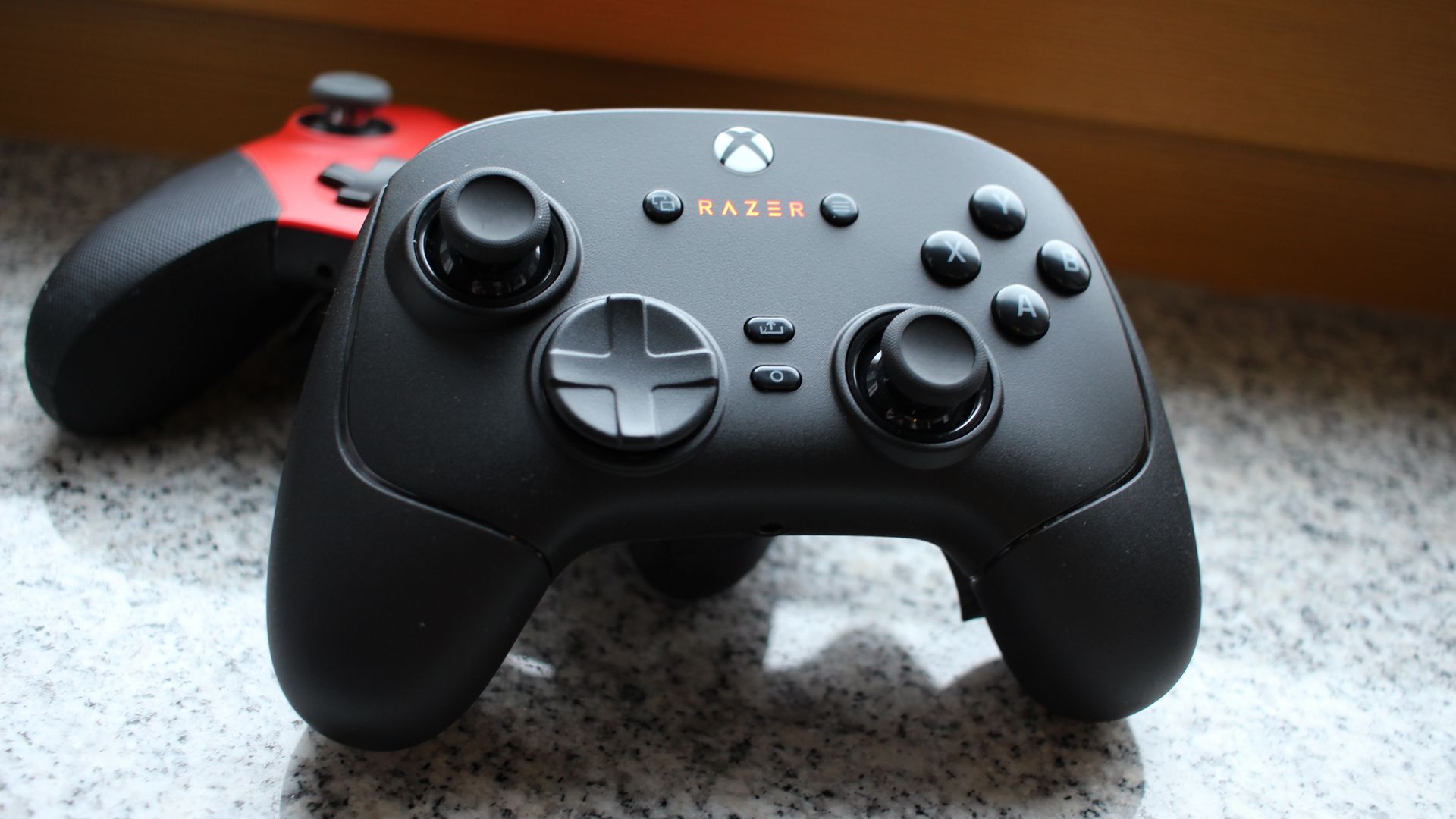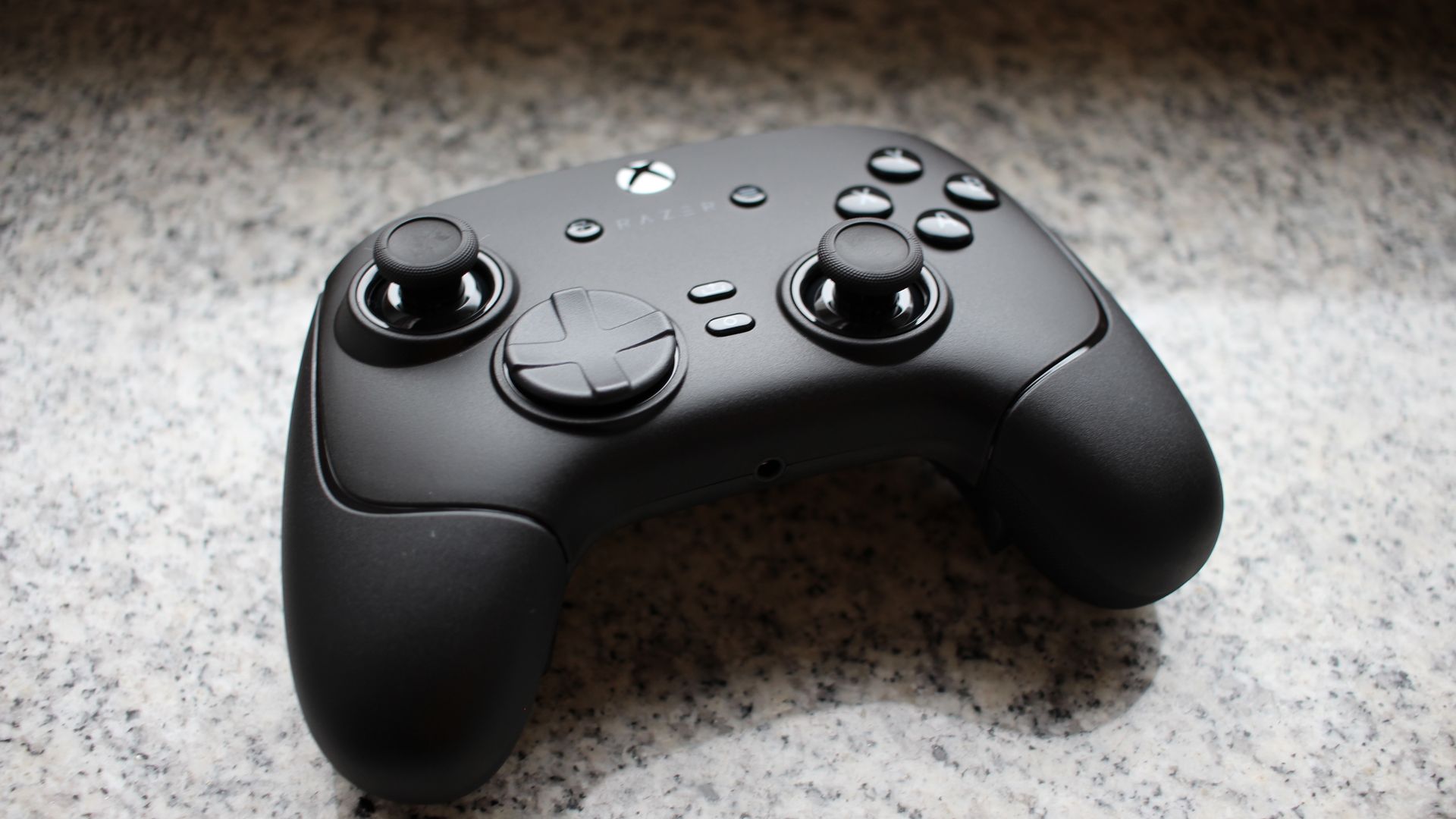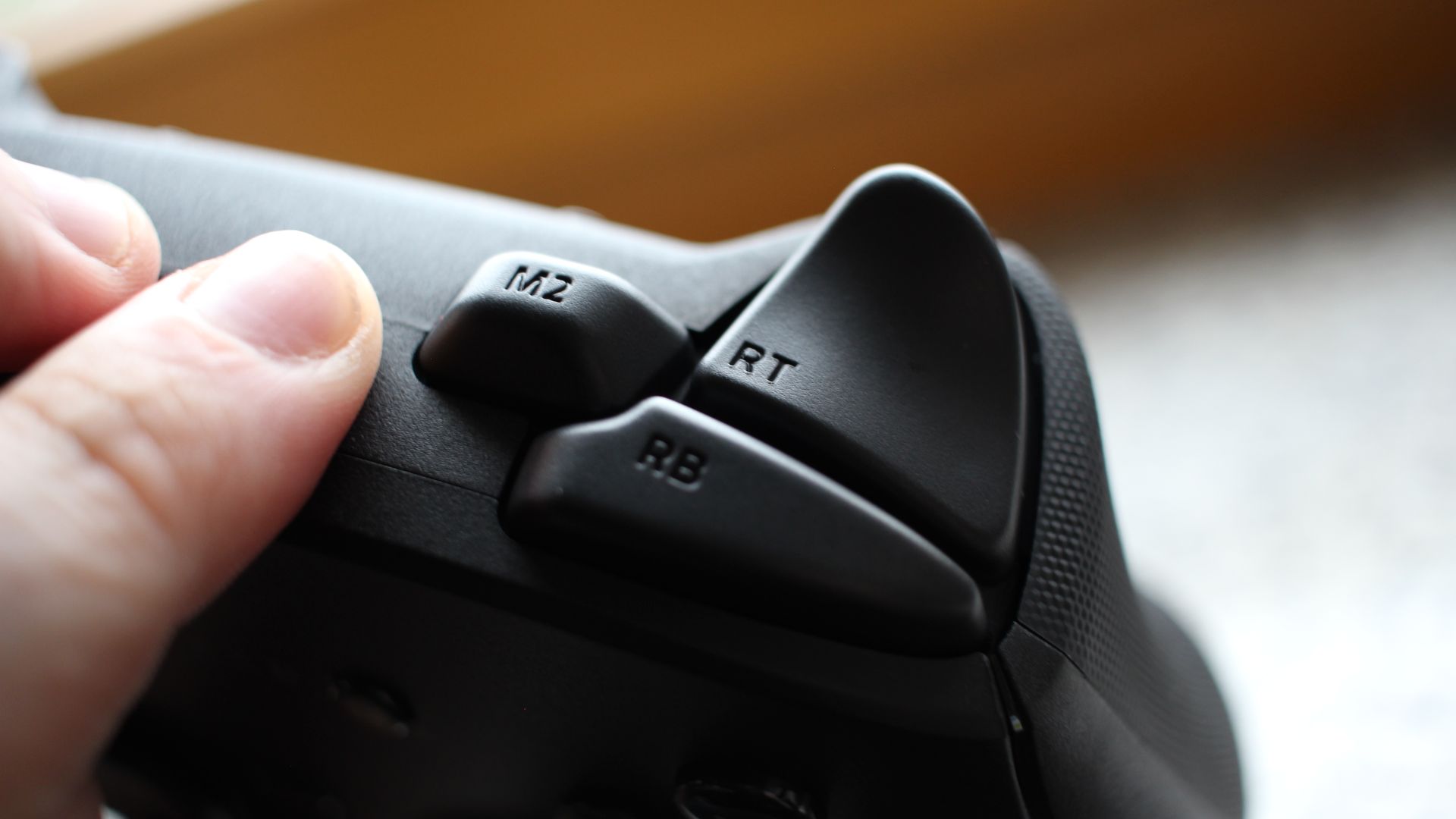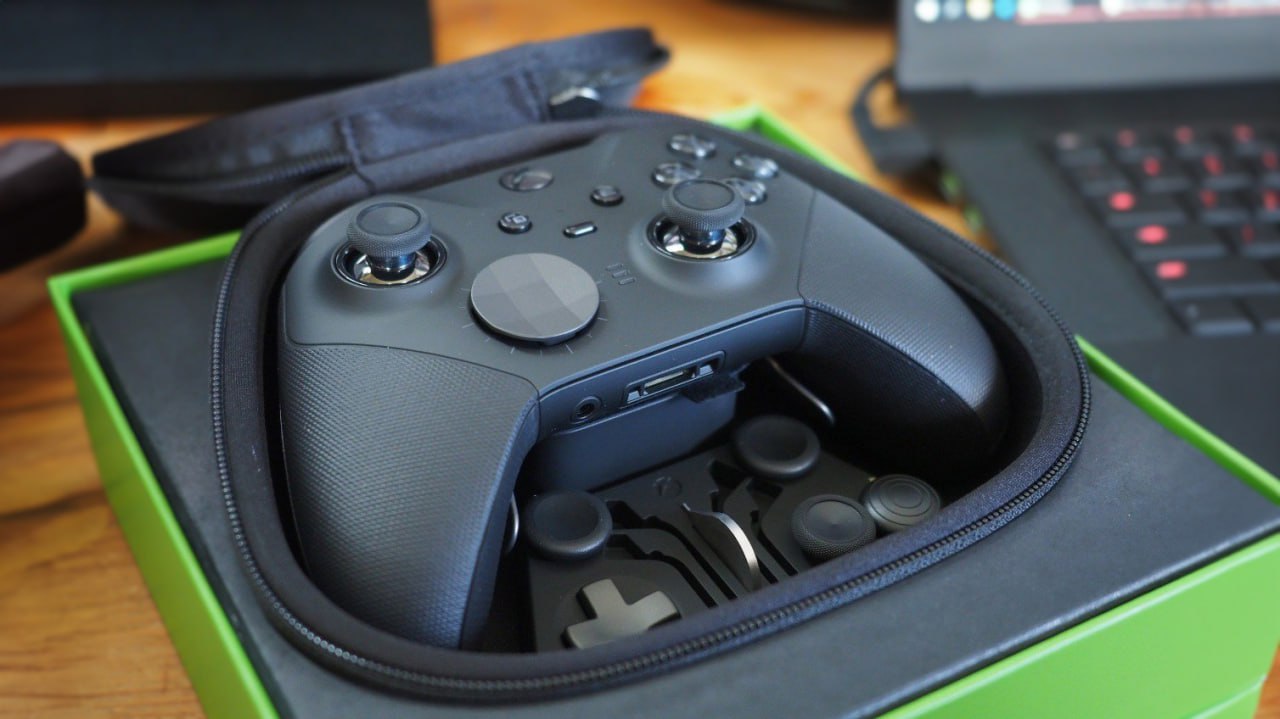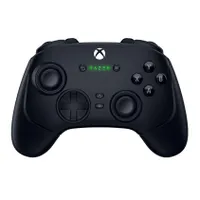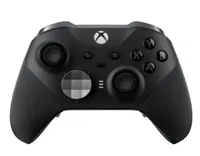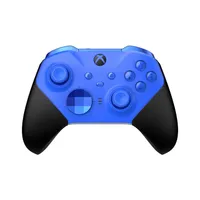I put the Razer Wolverine V3 Pro wireless Xbox controller up against Xbox's own famed Elite Controller (Series 2) — Who will win?
It's the battle of the big boys. We pit Razer and Xbox's most premium console and PC controller against each other in this epic show down.
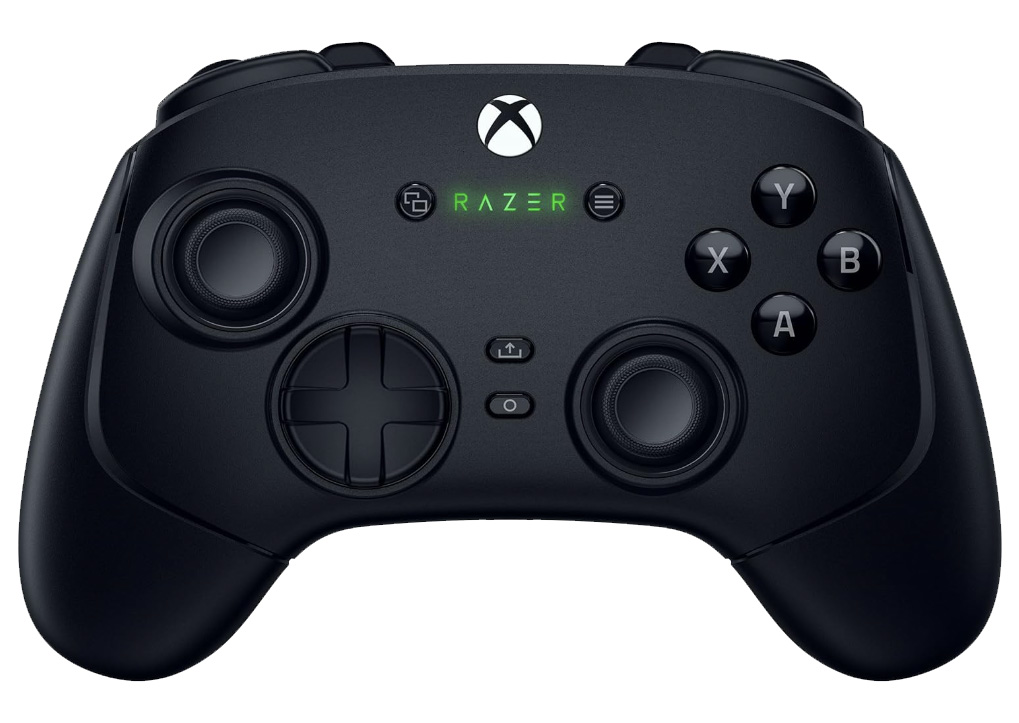
The Razer Wolverine V3 Pro is Razer's take on the "Elite" Xbox controller line, with features to match and even exceed Microsoft's own option. This is one of the first Razer controllers that has wireless compatibility with Xbox, thanks to Microsoft reducing restrictions there. It has a sublime ergonomic feel, with clicky buttons and a better d-pad, but the battery life doesn't match Xbox's own option.
Pros
- Fantastic ergonomics and feel
- Satisfying mouse click buttons
- Sensitivity clutch dedicated optional buttons
- Dedicated capture buttons
- High polling rate option on PC
- Hall effect sticks
Cons
- Lower battery life than the Xbox Elite
- No charging dock option
- No Bluetooth capabilities
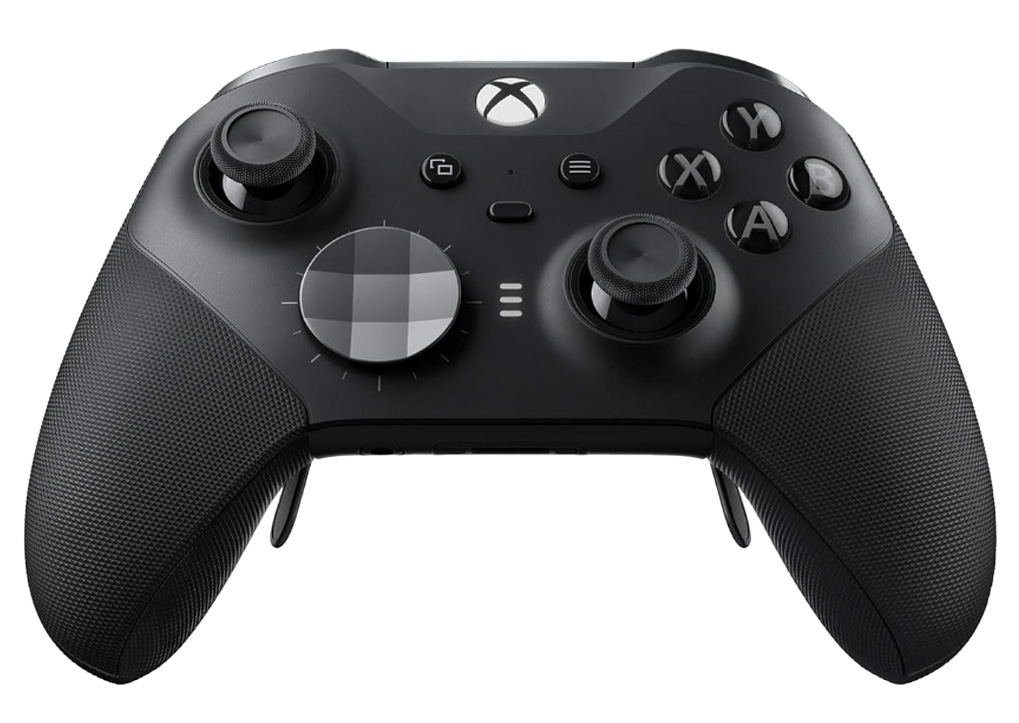
Microsoft in a sense pioneered the "premium" controller market with its Elite controller years past. We're only on the second iteration of the product, and it's due for improvements frankly, but it remains one of the best options on the market. The battery life is a true monster, and its versatility is unmatched. It does, however, suffer from known quality control issues.
Pros
- Monster battery life
- Removable back paddles
- Great charging dock
- Customizable "Design Lab"
- Signature Xbox feel
- Bluetooth capable
Cons
- Known wear and tear issues
- No dedicated capture buttons
- No Hall Effect sticks
It's the battle of the beasts. It's the shiny new Razer Wolverine V3 Pro vs. Microsoft's flagship Xbox Elite Controller (Series 2). These are both the only options I would personally consider as a high-end premium offering right now, whether it's across PC or Xbox console for that matter.
The Razer Wolverine V3 Pro is special, in essence, because it's among the first third-party options that are truly wireless for Xbox. Up until now, Microsoft has maintained something of a monopoly on wireless controller options on its console, but has begun relenting on the restrictions.
The competition should come in thick and fast as various manufacturers line up to build a better mousetrap, in essence. The first and most prolific forerunner here is without a doubt Razer, who already has a wealth of experience building premium accessories in general. Whether it's their Razer Blackshark V2 Pro headset for Xbox or the Razer Kishi Ultra for Xbox Cloud Gaming, Razer has just taken pole position in most categories, and honestly, it looks like they might be poised to take Xbox's controller dominance away too. Could the Razer Wolverine V3 Pro be the best Xbox controller of all time?! Read on to find out.
But let's drill down into the nitty-gritty of what makes these controllers even worth choosing between in the first place. If you're too busy to read the whole thing, that's cool, check out the TL;DR section for the summary. But for more detail, be sure to dive into each section to learn about where the Razer beats Xbox, and where Xbox beats Razer in various categories you'll find important to your needs.
As always, if you have any questions, hit the comments too.
Razer Wolverine V3 Pro vs. Xbox Elite Controller (Series 2): TL;DR summary
If you just want to know directly which is better without the added detail, look no further. The truth is they're both excellent controllers, but there are a few differences worth being aware of before choosing one way or the other.
- The Razer Wolverine V3 Pro controller arguably feels better in the hand, with a lighter weight, superior ergonomics, and mouse-click activation inputs that just feel incredibly satisfying.
- The Xbox Elite Controller (Series 2) has far better battery life. Coupled with its bundled battery dock, you practically never need to worry about battery life on your Xbox Elite Controller (Series 2), which rocks up to 40+ hours on a single charge. The Razer Wolverine V3 Pro by comparison will need to be manually plugged in multiple times throughout the week, if you're a heavy gamer, with roughly 15~ hours of battery life. There's also no guarantee that the Razer Wolverine V3 Pro battery won't get worse over time. My Razer mice batteries certainly have gotten worse over time, for example. My Xbox Elite Controller (Series 2) battery, by comparison, is still absurdly long-lived.
- The Razer Wolverine V3 Pro may have the Xbox Elite Controller (Series 2) beat on quality control, but we won't know for certain until long-term testing. The Xbox Elite Controller (Series 2) has notorious quality control issues, specifically with the right bumper. I currently own two of these controllers, one at home and one at my partner's place. I spend about half of my time at each location, and the right bumper failed on both of them at around the same time, after between six months and a year roughly (thanks Elden Ring). The Razer Wolverine V3 Pro has "mouse click" bumpers, and given the firm's pedigree building mouse and keyboard switches across robust activation tests, the Razer Wolverine V3 Pro might be the safer long-term pick here. But we won't know for sure until long-term testing rounds. I'm planning to use the Razer Wolverine V3 Pro as my main controller for the next several months to that end.
- The Xbox Elite Controller (Series 2) is more versatile, with Bluetooth support for mobile gaming use cases. While this won't be an issue for most, the fact the Xbox Elite Controller (Series 2) also has a Bluetooth pairing option gives it an edge in versatility. If you want more robust Xbox Wireless on anything other than an Xbox, though, you'll have to buy the additional Xbox Wireless Adapter. It'll still work via USB cable too, though. The Razer Wolverine V3 Pro comes with a PC and Xbox wireless USB dongle as standard, as well as a USB cable for hyper-polling 1000 Hz gaming on PC.
- The Xbox Elite Controller (Series 2) is slightly cheaper at $179.99 to the Razer Wolverine V3 Pro at $199.99. It's cheaper still if you get the Xbox Elite Controller (Series 2) Core version, which is $139.99 without the charge dock and accessories.
Overall, it's pretty tough to call which one is definitively "better" right now. The battery life on the Xbox Elite Controller (Series 2) is just monstrously good, with a high-quality cell and a convenient charge dock. The quality issues are notorious and undeniable, though, although the Razer Wolverine V3 Pro itself might suffer from similar issues over time. We won't know for sure until further testing.
All the latest news, reviews, and guides for Windows and Xbox diehards.
Buying both new as of today, right this minute, though, the Razer Wolverine V3 Pro has a bit of an edge for me, at least while actually playing. I don't mind hugely plugging the controller in when it needs charging, and it feels so damn nice in the hand. I don't need the Bluetooth on the Xbox Elite Controller (Series 2) generally either, but that doesn't mean you might feel differently.
The quality issues on the Xbox Elite Controller (Series 2) often pertain to the right bumper, of which I've broken two relatively recently. It's apparently relatively easy to repair yourself, but I haven't taken the plunge just yet... Microsoft does offer a robust repair service via its website, though, and is arguably easier to deal with than Razer's repair service — as someone who has used both. At least in Europe, that is.
Bottom line:
- If you favor battery life and recharging, get the Xbox Elite Controller (Series 2).
- If you don't mind plugging your controller in regularly to recharge, get the Razer Wolverine V3 Pro.
Regardless of which you buy, you're going to have a great experience initially, at least. There are some nuances to each controller, and we'll go over them below in more detail.
Razer Wolverine V3 Pro vs. Xbox Elite Controller (Series 2): Specs
| Header Cell - Column 0 | Razer Wolverine V3 Pro | Xbox Elite Controller (Series 2) |
|---|---|---|
| Battery Life | 15~ hours | 40~ hours |
| Accessories | Two additional thumbstick options, carry case, charge cable, 2.4 gHz wireless USB dongle. | Two additional thumbstick options, removable paddles, charge dock, carry case, charge cable. |
| Features | Additional configurable shoulder buttons with sensitivity clutch option, trigger locks, mouse-click buttons, 1000hz hyper-polling mode wired on PC, dedicated Xbox capture buttons, anti-drift Hall Effect sticks | Regular analog sticks, frequently updated configuration app, deadzone configurations, hardware profile swap button, multi-stage trigger locks. |
| Compatibility | Xbox, PC | Xbox, PC, mobile devices via Bluetooth |
| Price | $199 | $179, with a zero accessories $139.99 "Core" version |
The Razer Wolverine V3 Pro and the Xbox Elite Controller (Series 2) have quite similar specs on the face of it, but when you drill down into the details, big differences emerge.
The elephant in the room for the Razer Wolverine V3 Pro is the battery life. The website lists around 20 hours of battery life, but in our testing we find that it doesn't quite reach that level if you're going particularly hard. Razer's HyperSense polling offers very responsive inputs, but the trade-off is battery life, seemingly. Microsoft's own Xbox Wireless protocol pretty much set the standard for wireless controllers over the years, and it was a big reason why Microsoft was reluctant to relinquish control of the wireless signal on its platform. But now third-parties are able to offer similar speeds to keep the console experience "standardized," Microsoft has opened up the gates to more competition. At least for right now, the Xbox Elite Controller (Series 2) has the Razer Wolverine V3 Pro firmly beat on battery life, clocking in at 40 hours easily.
Speaking of battery life, the Elite also has a convenient charging dock which has good weight and conveniently keeps your device topped off without having to fiddle with cables. The Razer Wolverine V3 Pro does not, however, and while it's not a huge deal, the charge dock is a big reason why I've purchased not one, but several Xbox Elite Controller (Series 2) over the years.
The Elite also comes with Bluetooth, whereas the Razer Wolverine V3 Pro does not. The Wolverine V3 Pro has a USB dongle in the box that is compatible with both Xbox and PC, however, whereas the Xbox Elite would require you to purchase an additional Xbox Wireless Adapter if you wanted the more reliable Xbox Wireless signal over Bluetooth. Still, having the versatility is useful, especially if you use Xbox Cloud Gaming.
Where Razer really starts to pull ahead on specs is in its actual controller experience. Hall Effect joysticks accompany mouse-click buttons and triggers, and they all honestly just feel fantastic. Hall Effect joysticks use magnets and an electrical field to detect movements, instead of the typical analog physical sticks the Xbox Elite Controller has. Analog controllers are susceptible to wear and tear, and thus, stick drift over time. And while my Elite controllers have yet to succumb to this problem, more and more manufacturers are going the Hall Effect route for longevity.
Additionally, both controllers have trigger locks that reduce the activation time and removes gradation. The Xbox trigger locks have three stages, whereas the Razer locks have one stage. The Razer Wolverine V3 also has two additional function shoulder buttons, which can be configured in a variety of ways. I've used them to add sensitivity clutches, which lets you adjust movement speed on the fly. It can be quite useful for certain games, especially shooters where you might want a higher sensitivity for turning, but lower sensitivity for aiming.
We'll get into more detail on all of the above in the next sections, but let's first talk about overall value.
Razer Wolverine V3 Pro vs. Xbox Elite Controller (Series 2): Price
The Xbox Elite Controller (Series 2) seems to have gotten a price cut recently, down to $179.99 complete with the case, charge dock, and additional accessories. The Razer Wolverine V3 Pro is $199.99 conversely, and while not significantly more expensive, it's worth noting regardless. The Xbox Elite Controller (Series 2) also has a "Core" bundle option, which is $139.99 generally and comes without the accessories.
In the box of the Razer Wolverine V3 Pro, you're getting a carry case, two additional thumb stick options (shorter for faster movements, and longer for more precision from the pivot), you also get a braided charge cable, and the USB dongle compatible with Xbox and PC.
In the box of the Xbox Elite Controller (Series 2), you also get a carry case, as well as the same pairs of additional thumb stick options. You also get a braided cable for direct charging, or charging via the heavy charge dock (which I personally love). You get detachable paddles, as well as a key for adjusting the tension of the sticks.
I would argue that the Xbox Elite Controller (Series 2) offers better value on paper, purely because of the charge dock. It's doubly true if you consider the Xbox Elite Controller (Series 2) Core option, which is almost the price of a full game cheaper than Razer's option. But on paper value is only half the battle. What will give you a better experience over time? Which will last longer? Let's explore.
Razer Wolverine V3 Pro vs. Xbox Elite Controller (Series 2): Feel, ergonomics, and features
I think without a doubt, and I'm surprised to be saying this, the Razer Wolverine V3 Pro feels better in the hand. The very idea of a "third party player 2" controller has been a meme for decades, but Razer and others like GameSir have gradually eliminated the stigma, offering options that are at least comparable to the first-party solutions. Now more and more of them are going fully wireless, Xbox seriously has its work cut out.
The Razer Wolverine V3 Pro just feels sublime to hold. The subtle curvature of the back buttons fits like a glove, and it co-opted many of the innovations Microsoft has put into its Xbox controllers over the years, like offset sticks and curved, grippy triggers. However, I think there's some subjectivity here.
The Xbox Elite Controller (Series 2) has rubberized grips, which some people prefer. I'm not a huge fan of the textured rubber, it can be a bit difficult to clean I find, also if they fall off for some reason there's absolutely no re-attaching them. The grips add another point of failure, and while admittedly, the grips haven't fallen off with this latest design, it was a common problem with the Series 1 Elite, which has probably soured my view of the rubber grips. Like I said, subjective, potentially.
Both controllers feel fantastic ultimately, and there's not a huge divergence between them in terms of overall feel. They weigh roughly the same, offer similar experiences, and will satisfy any user. I think I prefer the Razer Wolverine V3 Pro overall here, as it fits better for me. I think if you have particularly large hands, you may prefer the Xbox Elite Controller (Series 2), which has a slightly larger curvature on the grips. But honestly, there's not much in it. Both controllers get top marks here.
Where the Xbox Elite Controller (Series 2) has the Wolverine V3 Pro beat is software, I would argue. The Razer Wolverine V3 Pro uses a special Razer Controller Setup app downloadable from the Microsoft Store on both Windows and Xbox. It's designed for Xbox One, though, irritatingly, and is weird and clunky to control with a mouse. It also doesn't offer as many features as Microsoft's offering, which lets you bind the paddles and bumpers to a wider variety of system functions. I guess that's some home field advantages there. I would like to see Razer update its app here. It's nice to get sensitivity clutches on the additional shoulder buttons, but there's a wide variety of other functions that could and should be added here, otherwise the extra buttons feel a tad redundant.
Additionally, the Xbox Elite Controller (Series 2) has a dedicated hardware profile button, allowing you to swap between three separate software profiles on the fly, complete with an LED light for indication. Razer offers profiles too, but accessing them requires switching out to the app as far as I can tell. Razer, however, has dedicated capture buttons for both the Xbox Game Bar on PC and the Xbox console. If you want the same on the Xbox Elite Controller, you have to bind some of the back paddles to those functions, which is odd. Microsoft's Series 2 Elite is crying out for a refresh to add those kinds of features. It does, however, sport Microsoft's trigger rumble feature, unlike Razer's. Very few games actually use this feature, sadly, so I wouldn't base your purchasing decision on that.
It's also worth mentioning that the Xbox Elite Controller (Series 2) has the Xbox Design Lab feature as an option, allowing for deeper color customization for a higher price.
Overall, both controllers offer a good feature array. Microsoft also sports its proprietary Xbox port underneath for accessories like the Xbox controller keyboard, if you fancied that option. Razer only has the 3.5mm jack for headphones by comparison. But again, very few people actually own or use those Xbox controller accessories, and I wouldn't be surprised if they got completely deprecated in the future.
Razer Wolverine V3 Pro vs. Xbox Elite Controller (Series 2): Quality control
Perhaps the most controversial aspect of this comparison is quality control. The Xbox Elite Controller (Series 2) has notorious issues with its bumpers, which degrade in responsiveness over time. The sticks are also prone to drift, given their analog configuration. Microsoft's repair services are high-quality generally, though, and as long as you're within warranty they'll repair it free of charge relatively quickly. It's also not impossible to repair them yourself, although it's fiddly and not exactly easy. Microsoft could do a lot here to make their devices more repairable, and hopefully next generation, they will.
But it's also an unfair comparison right now. My Razer Wolverine V3 Pro is brand new, so I would expect it to not have any faults. My Xbox Elite Controller (Series 2) has gone through a battering, and the bumpers have degraded a bit due to a soulslike obsession recently which uses the right bumper for its main attack, generally. Microsoft probably didn't account for this when designing the controller, and arguably they should have, but them's the breaks. Another aspect of my Xbox Elite Controller (Series 2) that has degraded over time is the rubber covers on the trigger locks. Both controllers have trigger locks, which lets you disable the graded triggers and turn them into instant-activation buttons instead. The Razer's locks are pure plastic, and have two stages. The Elite's have three stages, which I'd argue is a bit unnecessary, and also have strange rubber covers for reasons I'm not entirely sure of. The rubber covers fell off on mine, which is frustrating, leaving only a spiky nub that is fiddly to move. It's a small detail, but just another example of Microsoft baking too many points of failure into its Elite.
There's every chance the Razer Wolverine V3 Pro could degrade in similar ways over the next year. And I plan to make the Wolverine V3 Pro my primary controller between now and then for this specific purpose. The Razer controller has Hall Effect sticks which uses magnets to feed positional data to your games, which supposedly eliminate the possibility of stick drift over time, since there's no wear and tear on the components to speak of. The mouse clicky buttons and bumpers also feel great, and we know from Razer's mice and keyboard switch testing procedures that they have a ton of experience in this space, testing actuations over millions of cycles with custom-built machines.
Where I would argue Razer doesn't generally perform here for the price is battery life. My wireless Razer mice, which are potentially at least vaguely comparable to the Wolverine V3 Pro, have seen a lot of battery degradation over time. And given that the Razer Wolverine V3 Pro battery cannot be replaced without going direct to Razer, that is of a particular concern for me. The Xbox Elite Controller (Series 2) battery is very high-quality and has seen no degradation whatsoever since I've had it, despite also being irreplaceable.
There's a lot of conjecture and extrapolations here, given that we don't have access to a time machine. The Hall Effect sticks in the Wolverine should certainly offer a better performance-over-time ratio than the Xbox Elite, but there's no guarantee that there's no sneaky construction defects in the Wolverine V3 Pro until we've tested it through to next year.
Razer Wolverine V3 Pro vs. Xbox Elite Controller (Series 2): Battery life
Speaking of battery life, this is one aspect the Xbox Elite Controller (Series 2) has the Razer Wolverine V3 Pro thoroughly beaten. Razer suggests that the Wolverine V3 Pro should last around 20 hours on a single charge, but I've found it reach just shy of that before needing to be plugged in. Depending on your set up, that might be annoying/problematic.
The cable provided in the Razer Wolverine V3 Pro package is incredibly long, though, so if you want to play and charge from the sofa, it shouldn't be a huge issue. If you play at a desk like I do, plugging it in isn't an issue at all, but it's worth being aware of.
The Razer Wolverine V3 Pro also has a wired 1000Hz hyper-polling mode I should note for "esports" level-play. It's a nice addition over the standard Xbox Wireless polling mode, and naturally requires a cable if you're going to boost the rapidity of signals between devices. Razer's signal for its wireless dongle may contribute to the performance of the battery. Microsoft's polling solution has had many years of fine-tuning to balance performance with battery life, so that might be contributing to the advantage the Xbox Elite Controller (Series 2) has in this area.
It would be especially problematic if you're using a wired Xbox headset connected to the Razer controller as well, given that the controller would have to contribute additional battery juice to the headset. Undoubtedly, the Xbox Elite Controller (Series 2) wins this face off, remaining the best controller for pure battery life out there.
Razer Wolverine V3 Pro vs. Xbox Elite Controller (Series 2): Which should you buy?
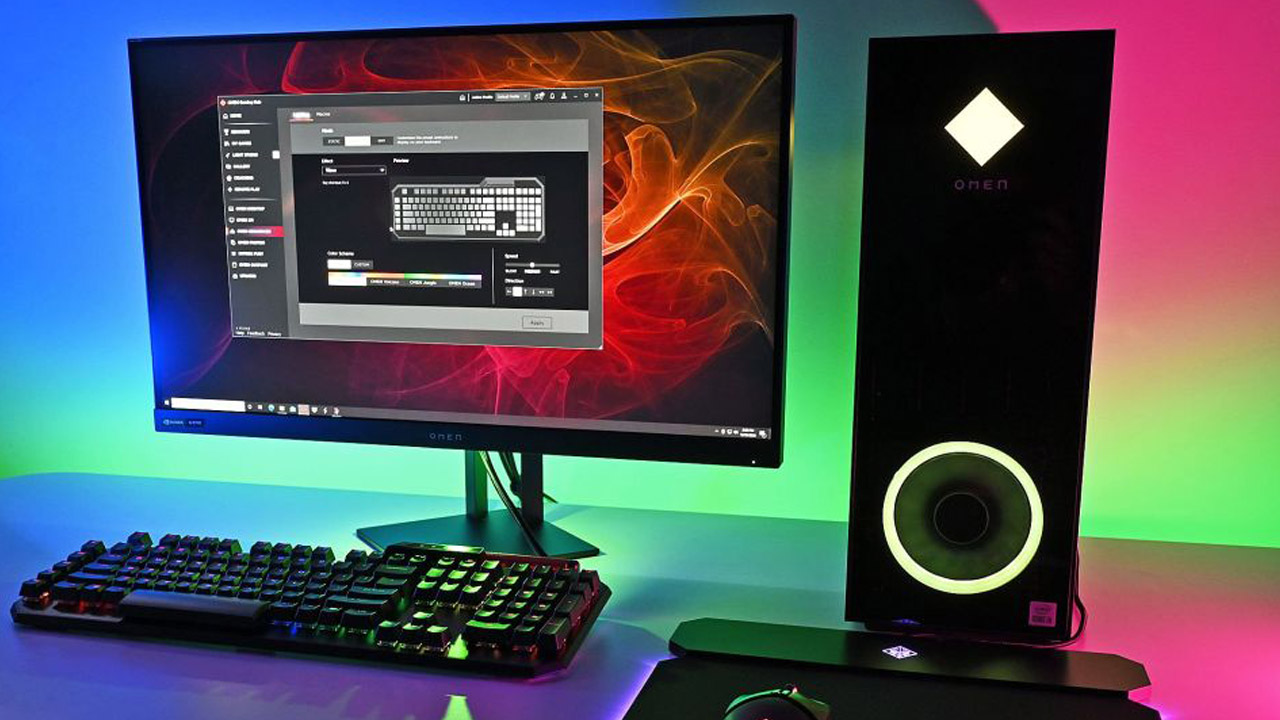
• Best Xbox / PC headsets in 2024
• Best upcoming Xbox Games / PC games
• Best Xbox controllers
• Best Xbox accessories
• Best small gaming PCs
• Best gaming laptops in 2024
• Best gaming handhelds 2024
Honestly, there are not a great deal of deciding factors here. Both controllers are excellent additions to the Xbox controller line up overall, and which ever you buy you'll feel well-served, at least until the bumpers fail or the battery degrades.
To do a true comparison, I'd need a time machine to see how the Razer Wolverine V3 Pro holds up after six to twelve months, but early impressions are solid. Razer has a wealth of experience in producing switches for things like keyboards and mice, which is why their accessories have become my brand-of-choice over the years.
It ultimately boils down to whether or not you want the battery charge dock experience I feel. If you don't mind plugging the Razer Wolverine V3 Pro in more frequently to charge it up, I'd say that offers a better overall experience right now. I'm also more confident about the long-term quality with the Wolverine V3 Pro, but there's no way to fully confirm that it will stand up to the test of time until we get there. If you do want a convenient dock and truly monstrous battery life that will last you over incredibly long periods, buy the Xbox Elite Controller (Series 2).
On price, the Razer Wolverine V3 Pro is slightly more expensive despite not having a battery dock included, but that's probably in part due to the higher-quality switches. However, there's also the Xbox Elite Controller (Series 2) Core version, which is cheaper still, if you feel like you don't need the battery dock.
Microsoft's Elite Controller (Series 2) might be at a disadvantage here, given that it's quite old at this point and the units I have to hand have been tested and battered extensively. I'll be sure to update this piece if the Razer Wolverine V3 Pro does start showing wear and tear issues in the coming months, but based on my experiences with other Razer accessories, I'm pretty confident Razer has Microsoft beat here overall. It's high time we got an Xbox Elite Controller (Series 3), I'd wager.
Razer Wolverine V3 Pro | $199.99 at Razer
The first Razer wireless Xbox controller is an absolute beast of an accessory, delivering what is arguably the best third-party controller experience in history. The downside is the battery life and charging experience. There's no dock for convenient charging, and you're looking at regular charge cycles to keep it juiced if you play a lot. There's no Bluetooth capability to speak of here either, sadly.
Xbox Elite Controller (Series 2) | $179.99 at Microsoft
The Xbox Elite Controller (Series 2) has absolutely monstrous battery life and comes with a charge dock and detachable paddles. It even has a design lab system where you can make your own colors (for a premium). However, it has notorious construction issues, namely with the right bumper. They're not impossible to repair, but if you're not willing to deal with it, the Razer might be a better option. The Elite does have Bluetooth capabilities too, though, which makes it more versatile overall.
Xbox Elite Controller (Series 2) Core| $139.99 at Microsoft
The Xbox Elite Controller (Series 2) Core is a cheaper variant that comes in an array of basic colors, but doesn't include some of the bells and whistles of its more expensive cousins. It doesn't come with the battery dock or the back buttons, but you can buy aftermarket back buttons on Amazon for like $5 and add them in yourself here. What you do get is the monster battery life, configurability, and trigger locks, all for significantly less than the other options.

Jez Corden is the Executive Editor at Windows Central, focusing primarily on all things Xbox and gaming. Jez is known for breaking exclusive news and analysis as relates to the Microsoft ecosystem while being powered by tea. Follow on Twitter (X) and tune in to the XB2 Podcast, all about, you guessed it, Xbox!
